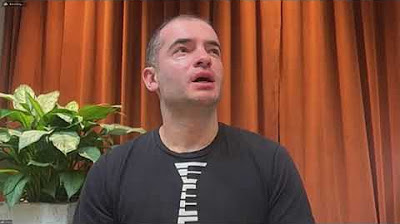No Priors Ep. 39 | With OpenAI Co-Founder & Chief Scientist Ilya Sutskever
Summary
TLDR在这段深入的对话中,OpenAI的联合创始人和首席科学家Ilas Suk分享了他对AI研究领域的见解,从深度学习的早期挑战到实现人工通用智能(AGI)的愿景。他回顾了神经网络的边缘化历史和AlexNet之前的研究环境,以及OpenAI是如何通过大规模的模型和计算力投资,推动AI技术的边界。Ilas讨论了OpenAI的成立初衷,从一个非营利组织到采用独特的盈利上限公司结构的转变,以及这一战略如何使他们能够追求更大规模的AI项目。他还探讨了模型可靠性、开源AI的复杂性和超级对齐的重要性,暗示了人类与高级AI关系的未来。整个对话展示了AI领域的快速进展和未来方向的深刻洞察。
Takeaways
- 🚀 OpenAI的创立源于对深度学习和人工智能的深刻洞察,以及对神经网络潜力的早期认识。
- 🌌 早期AI领域并不被看好,但OpenAI的创始人们相信神经网络像小型大脑,具有巨大潜力。
- 💡 使用GPU进行机器学习是OpenAI成功的一个关键因素,尽管当时对GPU的具体应用并不十分明确。
- 🧠 神经网络的规模是其性能的关键,更大的神经网络能够实现前所未有的功能。
- 📈 OpenAI的目标始终是确保人工通用智能(AGI)的发展能够惠及全人类。
- 🌐 OpenAI最初采用开源技术,后来转变为非营利组织,最终成为独特的“Capped-profit”公司结构。
- 🔄 从Dota 2项目到Transformer模型,OpenAI的研究方向不断演进,以适应技术发展和市场需求。
- 📚 早期的机器学习工作逐渐转向大型项目,如GPT系列,这些项目展示了显著的进步。
- 🤖 随着模型变得更加可靠,它们将在更多任务中变得更加有用,提供更深入的洞察力。
- 🔢 模型规模的增加不仅提高了性能,还可能解锁新的、前所未有的有价值应用。
- 🔄 尽管小型模型在特定应用中可能足够,但大型模型将在更广泛的应用中提供更好的性能。
- 🌐 开源模型在短期内有助于公司开发有用的产品,但长期来看,随着AI能力的提升,开源模型的角色可能变得更加复杂。
Q & A
OpenAI的创立初衷是什么?
-OpenAI的创立初衷是确保人工智能的发展能够惠及全人类。从一开始,OpenAI的目标就是推动自主系统,即能够完成人类大部分工作、活动和任务的人工智能,确保其对人类整体有益。
OpenAI在技术策略上有哪些演变?
-OpenAI的技术策略从开源技术转向了非营利组织,最终成为了CAP公司,这是为了解决大量计算资源的需求。他们意识到,为了在人工智能领域取得实质性进展,需要大量的计算资源,而非营利组织无法满足这一需求。
为什么OpenAI选择转型为CAP公司?
-OpenAI选择转型为CAP公司是因为他们认识到,为了实现人工智能的实质性进展,需要大量的计算资源,而非营利组织无法提供足够的资源。此外,他们考虑到如果人工智能技术可能导致大量人失业,那么构建这种技术的公司不应该能够获得无限的利润。
Ilias Suk对神经网络的早期直觉是什么?
-Ilias Suk早期对神经网络的直觉是,神经网络就像小型的大脑,尽管当时无法证明数学定理,但他认为这些小型的“大脑”可能有一天能够做到一些惊人的事情。他相信通过训练更大的神经网络,可以实现前所未有的成果。
OpenAI如何克服早期人工智能研究的挑战?
-OpenAI通过认识到需要更大的神经网络、拥有足够的数据集来约束大型神经网络,以及掌握训练这些网络的技术知识来克服早期的挑战。他们还意识到,GPU的使用对于神经网络的训练非常有利。
OpenAI在研究上的主要方向是什么?
-OpenAI的主要研究方向是不断扩大和改进Transformer模型,尤其是训练更大、更复杂的神经网络来处理文本预测和生成任务。他们通过不断增加计算和数据的投入,使得模型的性能得到显著提升。
Ilias Suk认为当前人工智能模型的最大瓶颈是什么?
-Ilias Suk认为当前人工智能模型的最大瓶颈是可靠性。他指出,当模型在处理难度较高的问题时,用户需要对模型的回答有高度的信心。
OpenAI如何看待开源模型的角色?
-OpenAI认为开源模型在短期内对于公司来说是有益的,因为它允许公司自主决定模型的使用方式和应用场景。但在长期来看,随着人工智能模型的能力越来越强,开源模型的角色将变得更加复杂,需要更多的考虑。
Ilias Suk如何看待Transformer架构的未来?
-Ilias Suk认为Transformer架构是目前非常有效的,并且通过不断的改进和扩展,可以继续取得进步。他提到,虽然人脑看起来有专门化的区域,但实验表明大脑的可塑性非常高,这支持了单一、统一的神经网络架构的理念。
Ilias Suk如何看待超级智能和超级对齐?
-Ilias Suk认为超级智能是指那些比人类更聪明的数据中心,它们不仅能做所有人类能做的事情,而且能更快地学习。他强调,我们需要确保这些超级智能对人类持有积极、温暖的感觉,这就是超级对齐项目的目标,即在超级智能出现之前,就开始着手研究如何控制它们,确保它们对人类友好。
OpenAI如何看待人工智能的未来发展?
-OpenAI认为人工智能目前正处于加速发展的阶段,但未来可能会有多种力量影响其发展速度,包括成本、数据规模、工程复杂性、投资额、工程师和科学家的兴趣等。他们认为,尽管可能会有一些减速的因素,但人工智能的发展仍将继续。
Outlines

This section is available to paid users only. Please upgrade to access this part.
Upgrade NowMindmap

This section is available to paid users only. Please upgrade to access this part.
Upgrade NowKeywords

This section is available to paid users only. Please upgrade to access this part.
Upgrade NowHighlights

This section is available to paid users only. Please upgrade to access this part.
Upgrade NowTranscripts

This section is available to paid users only. Please upgrade to access this part.
Upgrade NowBrowse More Related Video

Ilya Sutskever: Deep Learning | Lex Fridman Podcast #94

Ilya Sutskever (OpenAI Chief Scientist) - Building AGI, Alignment, Spies, Microsoft, & Enlightenment

6. Layers of Mental Activities

Shane Legg (DeepMind Founder) - 2028 AGI, Superhuman Alignment, New Architectures

Highlights of the Fireside Chat with Ilya Sutskever & Jensen Huang: AI Today & Vision of the Future

Interview with Dr. Ilya Sutskever, co-founder of OPEN AI - at the Open University studios - English
5.0 / 5 (0 votes)
